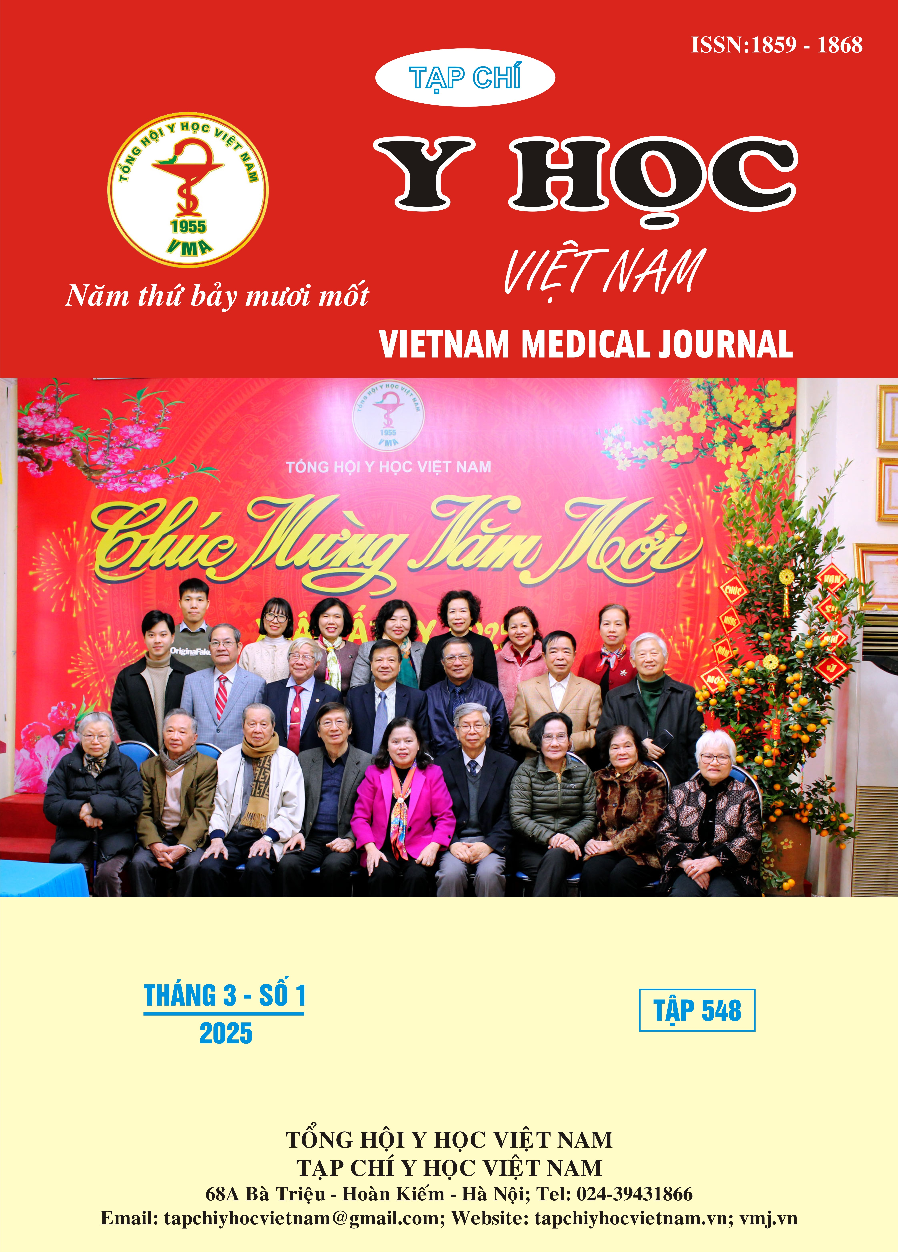ÁP DỤNG CÁC BIỆN PHÁP LỌC MÁU TĂNG THẢI TRỪ CHẤT ĐỘC TẠI TRUNG TÂM CHỐNG ĐỘC BỆNH VIỆN BẠCH MAI
Nội dung chính của bài viết
Tóm tắt
Mục tiêu: Nhận xét thực trạng áp dụng các biện pháp lọc máu tăng thải trừ chất độc tại Trung tâm Chống độc Bệnh viện Bạch Mai. Đối tượng và phương pháp: Nghiên cứu mô tả trên 254 bệnh nhân ngộ độc cấp nhập viện tại Trung tâm Chống độc được lọc máu tăng thải trừ chất độc từ tháng 07/2021 đến tháng 06/2023. Kết quả: Tuổi trung bình của nhóm bệnh nhân nghiên cứu là 43,3 ± 18,1 tuổi, phần lớn trong độ tuổi lao động 20-59 tuổi (70,4%), tự tử là nguyên nhân ngộ độc chủ yếu (70,5%). Tác nhân ngộ độc chiếm tỷ lệ cao là diquat (26,8%), paraquat (24,4%) và methanol (22,4%). Đa số bệnh nhân ngộ độc mức độ trung bình tới nặng (63,4%). Trong số 475 cuộc lọc máu được thực hiện, lọc máu hấp phụ (HP) chiếm 52,6% (250 cuộc) và thẩm tách máu (IHD) chiếm 39,2% (186 cuộc). Lọc máu liên tục (CRRT) và IHD là hai phương pháp được khởi động lọc sớm nhất (lần lượt 3,67 và 4,13 giờ). Heparin không phân đoạn được sử dụng trong 67,6% số cuộc lọc. Kết luận: Nhiều biện pháp lọc máu tăng thải trừ đã được triển khai tại Trung tâm Chống độc Bệnh viện Bạch Mai, trong đó phần lớn là HP và IHD. Các căn nguyên ngộ độc thường được chỉ định lọc máu là diquat, paraquat và methanol.
Chi tiết bài viết
Từ khóa
ngộ độc cấp, lọc máu tăng thải trừ
Tài liệu tham khảo
2. Hoàng Quốc Thái Bình. Đặc điểm lâm sàng, cận lâm sàng và kết quả điều trị bệnh nhân ngộ độc cấp thuốc diệt cỏ diquat. Luận văn Thạc sĩ y học. Trường Đại học Y Hà Nội; 2022.
3. Đoàn Thu Hà. Ứng dụng phương pháp điện di mao quản trong chẩn đoán và điều trị ngộ độc paraquat. Luận văn Thạc sĩ y học. Trường Đại học Y Hà Nội; 2017.
4. Phạm Như Quỳnh. Đánh giá hiệu quả của phương pháp thẩm tách máu kéo dài ở bệnh nhân ngộ độc cấp methanol. Luận văn Thạc sĩ y học. Đại học Y Hà Nội; 2017.
5. Đặng Thị Xuân, Nguyễn Trung Anh. Nhận xét các biện pháp điều trị ngộ độc cấp methanol tại Trung tâm Chống độc Bệnh viện Bạch Mai. Tạp chí Y học Việt Nam. 2021;500:186-190.
6. Ngô Đức Ngọc. Nghiên cứu hiệu quả điều trị của phương pháp lọc máu liên tục tĩnh mạch-tĩnh mạch (CVVH) và thay huyết tương (PEX) ở bệnh nhân ngộ độc nặng. Luận án Tiến sĩ y học. Trường Đại học Y Hà Nội; 2012.
7. Hà Thị Bích Vân. Đánh giá hiệu quả của phác đồ lọc máu tích cực phối hợp với ethanol đường uống trong điều trị ngộ độc cấp methanol. Luận án Tiến sĩ y học. Trường Đại học Y Hà Nội; 2021.
8. Goldfarb DS, Ghannoum M. Principles and techniques applied to enhance elimination. Goldfrank’s Toxicologic Emergencies. 11th ed. New York, NY: McGraw-Hill; 2019: 90-110.
9. Roberts DM, Yates C, Megarbane B, et al. Recommendations for the role of extracorporeal treatments in the management of acute methanol poisoning: a systematic review and consensus statement. Crit Care Med. 2015;43(2):461-472.
10. Calello DP, Liu KD, Wiegand TJ, et al. Extracorporeal treatment for metformin poisoning: systematic review and recommendations from the extracorporeal treatments in poisoning workgroup. Crit Care Med. 2015;43(8):1716-1730.


